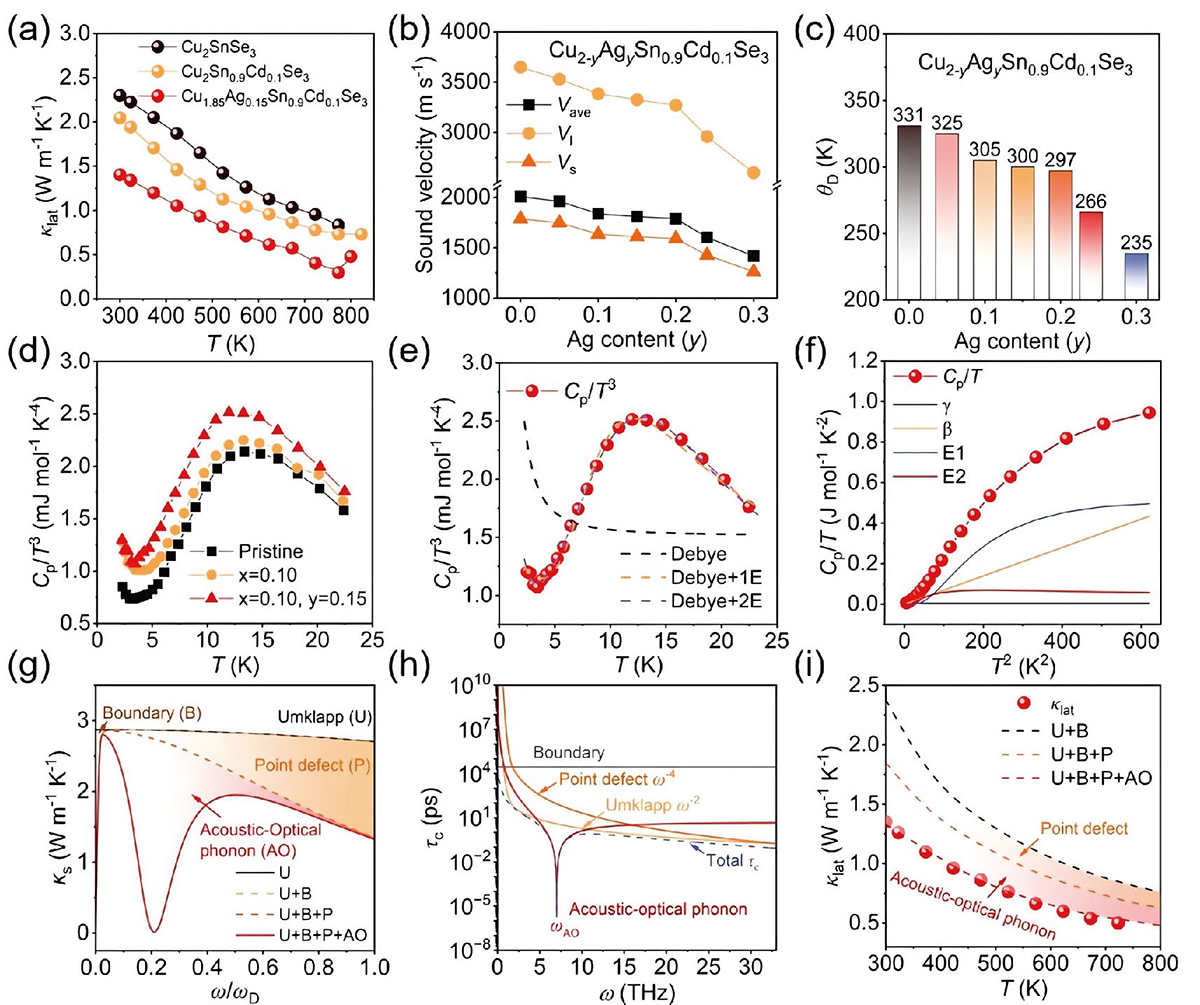Figure 6

Download original image
Reduced lattice thermal conductivity due to strong acoustic-optical scattering. (a) Temperature dependence of lattice thermal conductivity for Cu2SnSe3, Cu2Sn0.9Cd0.1Se3 and Cu1.85Ag0.15Sn0.9Cd0.1Se3. (b) Room temperature sound velocity and (c) Debye temperature as a function of Ag content (y). (d) Low-temperature heat capacity for Cu2SnSe3, Cu2Sn0.9Cd0.1Se3, and Cu1.85Ag0.15Sn0.9Cd0.1Se3. (e) Relationship of Cp/T3 versus T for Cu1.85Ag0.15Sn0.9Cd0.1Se3 fitted with the Debye and Debye-Einstein models, respectively. (f) Relationship of Cp/T versus T2. The individual contributions from electronic (γ), Debye (β) and two Einsteins terms (E1, E2) are shown in the figure. (g) Spectral lattice thermal conductivity (κs), (h) phonon relaxation time (τc), and (i) lattice thermal conductivity for the Cu1.85Ag0.15Sn0.9Cd0.1Se3 fitted using the Debye-Callaway model. The contributions of Umklapp scattering (U), grain boundary scattering (B), point defect scattering (P), and acoustic-optical phonon scattering (AO) are calculated by the Debye-Callaway model.
Current usage metrics show cumulative count of Article Views (full-text article views including HTML views, PDF and ePub downloads, according to the available data) and Abstracts Views on Vision4Press platform.
Data correspond to usage on the plateform after 2015. The current usage metrics is available 48-96 hours after online publication and is updated daily on week days.
Initial download of the metrics may take a while.

